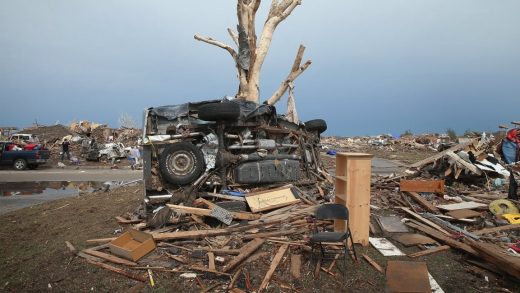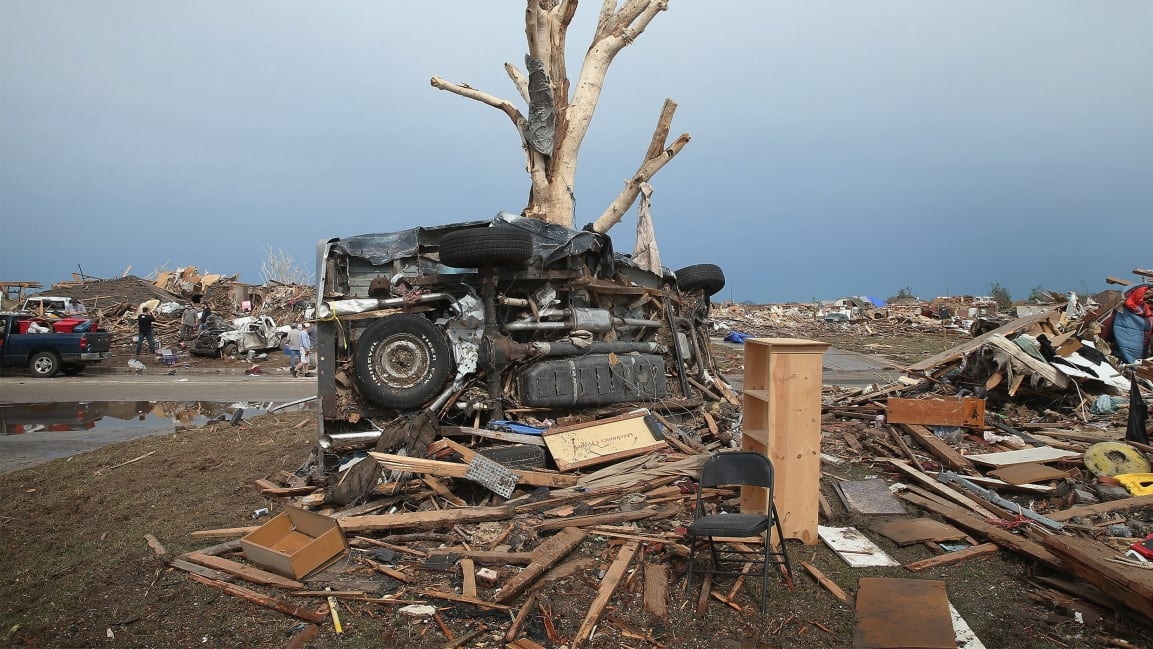Natural disasters can inspire better local climate change policies—if they’re notably deadly or weird
In 2013, a massive tornado with winds of around 200 miles per hour hit Moore, Oklahoma, killing 24 people. Seven of those fatalities were children who were in an elementary school that was demolished by the storm. In the immediate aftermath of the tragedy, local legislators pushed for policies that would fund storm shelters in schools, citing the children’s deaths as the motivating factor. It’s an example, according to a new study, of how natural disasters have to be unusual or deadly in order to prompt local climate policies.
Researchers at Oregon State University recently looked at local policy responses to extreme weather events. The focus was on what conditions spurred policy change—how much does the political orientation of an area matter, for example, or does policy change depend on how much attention that weather event received?
The reason they wanted to focus on the local response, explains lead author Leanne Giordono, a researcher in OSU’s College of Public Health and Human Sciences, is that it’s the local communities who are on the frontlines of these natural disasters. That’s not to minimize what goes on at the state and federal levels, she says, “but local communities are seeing firsthand on the ground what happens.” So how are they reacting?
The study looked at 15 cases of extreme weather of all different types—flooding, tornado, wildfire, winter weather, heat wave, landslide, and tropical storm—from a database called SHELDUS, or Spatial Hazard Events and Losses Database for the USA. The researchers then looked at media coverage of each disaster and its after effects, and visited each site to interview local policy makers and community leaders on what, if any, policy changes stemmed from that tragedy.
The main indicator of if there would be policy change, researchers found, was a high-impact weather event, which the researchers measured as being those with ten or more fatalities in one day, and which resulted in a Presidential disaster declaration. “A really impactful event matters to spark policy change,” Giordono says.
From there, the researchers identified two “recipes” for local policy change: a high-impact event in a Democratic county with a lot of post-event media attention, and a high-impact event in a Republican county where the event was particularly unusual, either because it was not normal for the area in terms of type and timing or because it happened in a string of multiple other extreme weather events. An interesting thing about those Republican communities where the researchers did interviews, Giordono says, was that “a number of those communities didn’t want to talk about what had happened to them in terms of climate change—they used other language or even explicitly said ‘We don’t want to talk about climate change here’—but we still saw that they were essentially doing what they needed to do to hedge against future events.”
In both cases, policy changes were still mostly reactionary and fairly modest. Most of the policies these communities passed had to do with emergency preparedness and response for the same kind of event—like the storm shelters in schools, which would keep kids safe during the next tornado. Other policies concerned land use and ecosystem protection, recovery and reconstruction, and building the regional capacity for data collection or communicating risk. There was no evidence these locales passed mitigation-focused policies, like limiting carbon emissions or moving to solar power.
Still, Giordono thinks these findings are hopeful, because it shows that local communities are responding to these events with policy change and learning from these experiences. It’s also helpful to see that the attention given to these events matters. The next question, then, is if there’s a way to leverage that attention and spur it into policy change without having to directly experience a deadly natural disaster.
(23)



